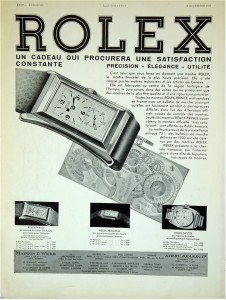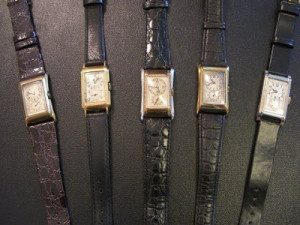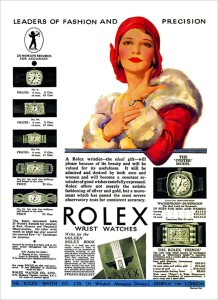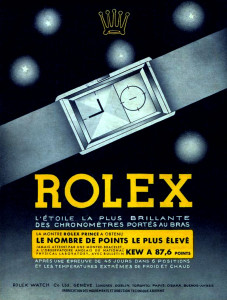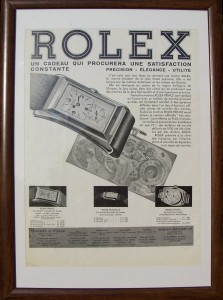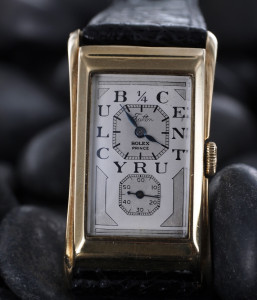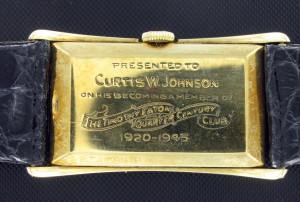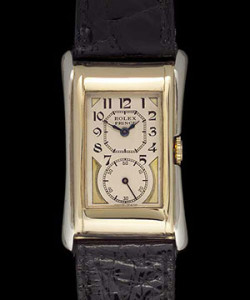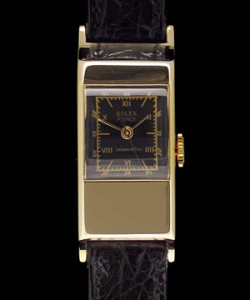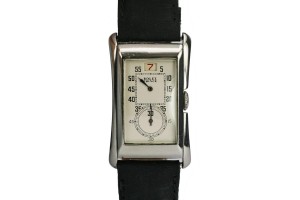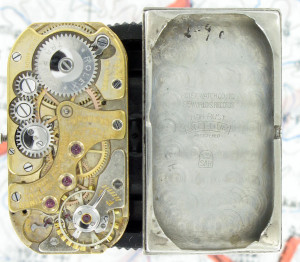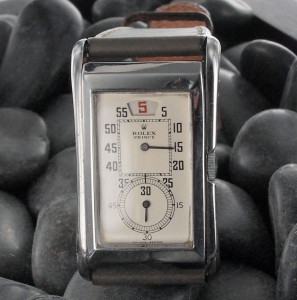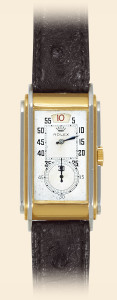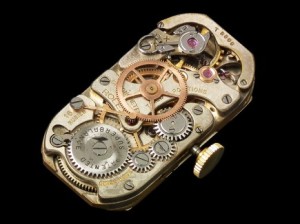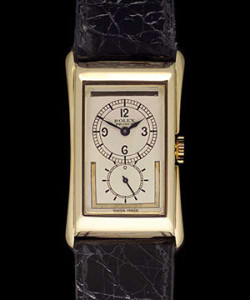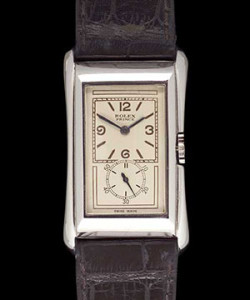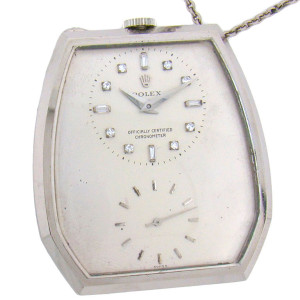Rolex Prince: the doctor’s watch
In 1928 Rolex introduced the Prince which almost instantly became known as the doctor’s watch. The rectangular watch had a bigger dial on top for the hours and the minutes and below that a smaller dial for the seconds. That made it easy for a doctor to measure a patient’s pulse rate.
In the history of watches the Rolex Prince is seen as one of the most groundbreaking watches. After it came on the market in 1928 it immediately set new standards for accuracy and ease of use for luxury watches.
After it’s introduction the Price was for sale in two different styles for the case, one a more rectangular (Classic) and the other one a much more round design (Brancard). Rolex used several materials to manufacture a Prince, yellow gold, sterling silver, platinum and two-tone combinations (later steel also became available). The Classic was Model 1343 and the Brancard Model 971.
Soon after it’s introduction the manual wound movement was replaced by an automatic one.
In the ’30s of the last century the price of a Rolex Prince was about the same as that of a car. The following illustrates that.
The Gruen doctor’s watch and the Rolex Prince both have the same movement. The former was made for the American market, the latter for the rest of the world and therefore they were not sold as competitors. Still, the price of the Gruen watch was only 30% of the price of a Prince.
Once again Rolex proved to be brilliant in their marketing and showed how strong the brand was.
In 1935 Rolex started with the production of the ‘Railway Prince’. It was designed with the forms of a locomotive in mind and was registered as Model 1527.
The next new model, the ‘Jumping Hours’, was a truly new, futuristic design. The upper dial of the watch now had only a minute hand and the hours could be read as numbers (1-12) through a hole in the dial at the 12 o’clock position. Years later this invention was the inspiration for the development of the Rolex Datejust.
One of the last models of the Rolex Prince series was the ‘Super Precision Aerodynamic’. This watch had one big dial for the hour, minute and second hands.
Somewhere during the 40s the production of the Rolex Prince ended and it got replaced by more round and sports models.
During it’s existance several ‘special editions’ of the Rolex Prince were manufactured.
The ‘Sporting Prince’ was one of them. It was a pocket watch designed to be used during athletic activities. The movement was in a case which had a spring mechanism with which the dial could pop up from the case.
A big Canadian warehouse wanted to give their employees who had worked for them for more than 25 years a watch and ordered the ‘Quarter Century Club’ Prince by Rolex. These watches had the words ’1/4 Century Club’ printed on the outer ring of the dial instead of the normal numbers.
Pic.: 1945 ‘Quarter Century Club’
Pic.: 1929 white/yellow gold
Pic.: 1930 asymmetric
Pic.: different versions of the ‘Jumping Hour’
Pic.: aerodynamic 1940s caliber
Pic.: 1936 gold
Afb.: 1930 staal
Pic.: Prince pocket watch
Finally Rolex reintroduced the Prince and it is for sale in 2013 (Rolex Prince).
Jaap Bakker
Leave a Reply

